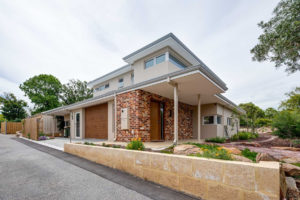 Australian research demonstrates people are paying a premium for energy-efficient homes of up to 9.4 per cent for seven-star rated homes, but in Western Australia are we seeing this become a reality?
Australian research demonstrates people are paying a premium for energy-efficient homes of up to 9.4 per cent for seven-star rated homes, but in Western Australia are we seeing this become a reality?
Environmentally sustainable design and construction of residential dwellings in Western Australia has significantly improved over the past decade.
Local and state planning policy now demand new buildings meet high performance outcomes by improving efficiency and design features. This ensures homes of the future are comfortable to live in; naturally warm in winter and cooler in summer, offering natural daylight and air movement inside the home.
They are also healthy homes that balance extreme temperature variations by naturally ventilating pollutants, mould and dust build up, as well as chemical off-gassing from furniture, paint and other nasties used in fit-out.
“Buyers know these homes are affordable to run and improve their value and saleability – no matter what the season”. Chiara Pacifici, Founder Green Gurus™.
Whilst consumers are increasingly aware of the benefits of solar passive design to comfort, health and environment, the cost savings are becoming a very important deciding factor.
Research conducted by the CSIRO and Common Capital on behalf of the EnergyFit Homes initiative, showed that 92 per cent of housing consumers want energy efficiency details revealed in building inspection reports; 82 per cent at open inspection; and 72 per cent in property advertising, with half of home buyers and renters willing to pay for this information.
There are a number of main factors driving the supply and demand for sustainable homes nationally including the impact of climate change, improvements to planning regulation and policies, housing affordability and the need for better public transportation.
For example, since 2011, National Construction Codes require minimum six star thermal performance standards for all new dwellings. In 2019, energy ministers agreed to the trajectory for low energy buildings, a national plan that sets a trajectory towards zero energy (and carbon) ready buildings for Australia. It also provides a suite of initiatives to improve the energy efficiency of existing buildings in Australia.
Government subsidies and incentives for household renewable energy solutions have also contributed to the uptake of smart technologies such as Solar PhotoVoltaic (PV) systems and solar hot water.
Australia now has the highest uptake of solar power systems globally with recent data showing that more than 2.68 million rooftops have solar installed.
In Western Australia, PV installations on rooftops exceed over 34 per cent of dwellings with Armadale, Forrestdale, and Bedfordale leading the charge in 2020. WA’s total solar installation is up from 25.9 per cent in April 2018.
Written by: Green Gurus